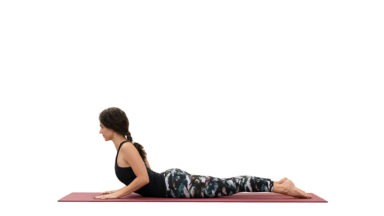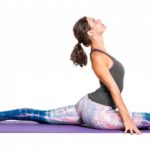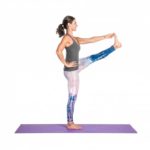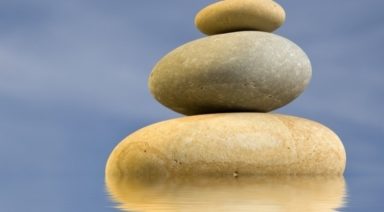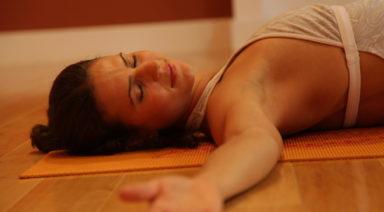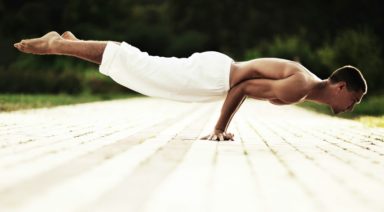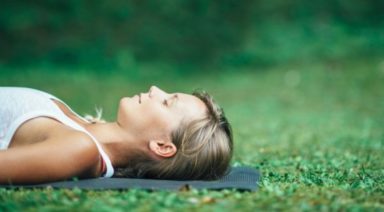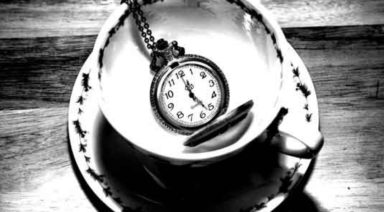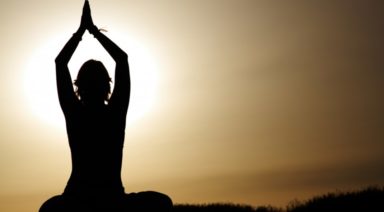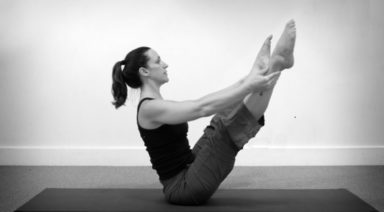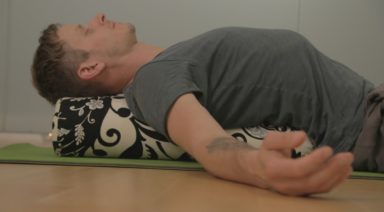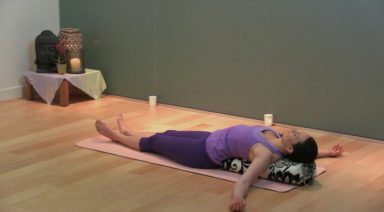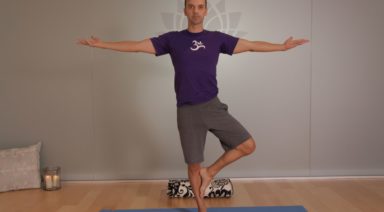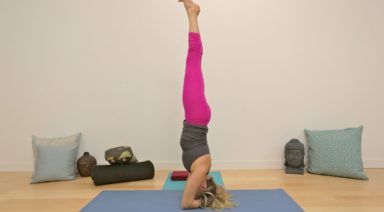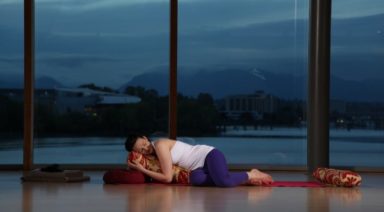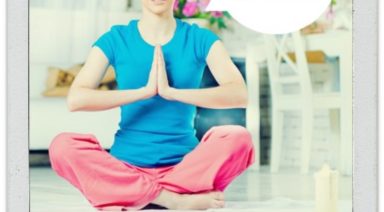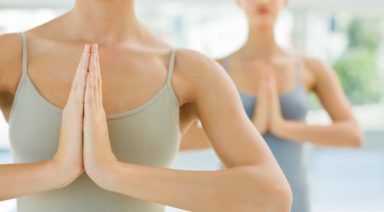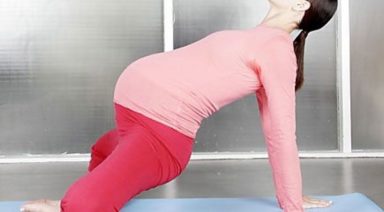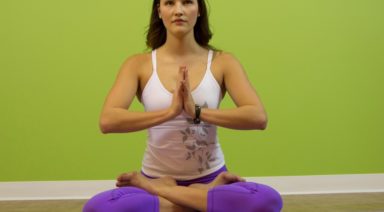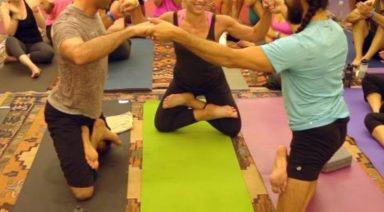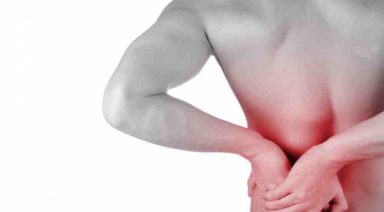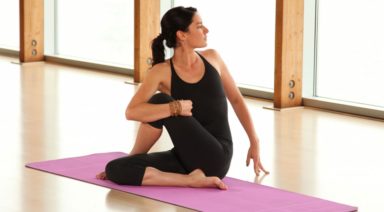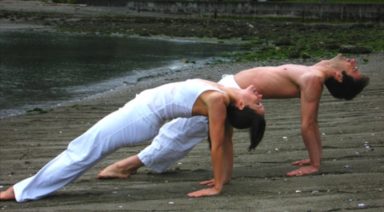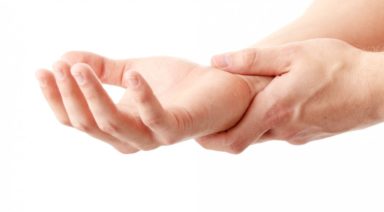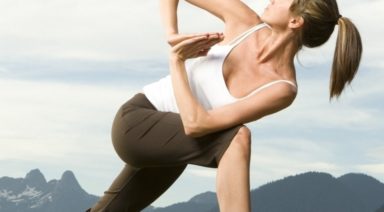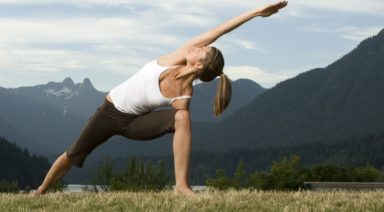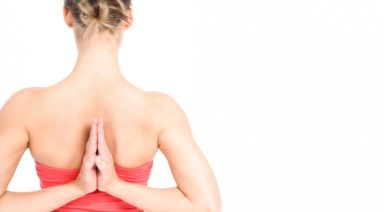Ananda Balasana: Happy Baby Pose
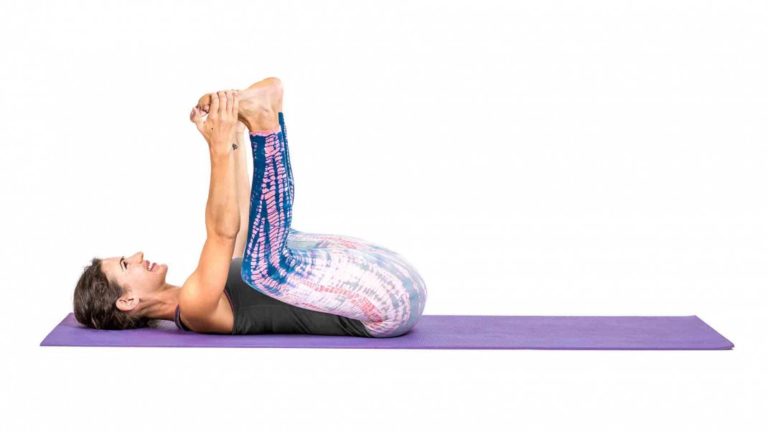
Ananda balasana (ah-NAHN-duh bah-LAHS-ah-nah) stretches the inner groin, hamstrings, and lower back. Invite the attitude of a joyful baby with this pose!
Philosophy and Origin:
Dasharatha, the King of Ayodhya, was a famous warrior and a protector of dharma (life purpose). He had three wives and no children. He longed for an heir, and Mother Earth was seeking a protector to save her bounty from unscrupulous and devious desires. Tradition teaches that as the wick of dharma burns low, Vishnu the preserver uses birth to set things right again. Mother Earth’s call meant that Vishnu would return.
After performing a sacrifice that yielded a golden milk pudding, the king was instructed to share this bounty with his wives with the promise of fertility and children. Each of his wives became pregnant and would give birth to all of his children. It is often thought that the divine is born into each person on a regular basis and unexpectedly, and we can understand this story as an allegory of how we treat our minds and bodies: avatars and other deities represent potentials waiting to be realized.
Sanskrit:
- Ananda: blissful, pure bliss
- Bala: baby
- Asana: pose
Physical Benefits:
- Opens and stretches the hips.
- Stretches the inner groins and hamstrings.
- Lengthens the spine.
Preparatory Poses:
- Childs pose | Balasana
- Reclined hand to foot pose
Sequential Poses:
- Cow face pose | Gomukhasana
- Reclined twist
Counter Poses:
- Bridge pose | Setu bandhasana
- Savasana
Adjustments/Modifications:
- Hold your ankles or shins.
- Place a blanket under your neck.
- Hold each foot with a yoga strap looped around the middle arch of each foot.
Step-By-Step:
- Start on your back with your knees drawn in toward your chest.
- Grab hold of the pinky toe sides of your feet, with your elbows on the inside of your knees.
- Draw your shoulders toward the ground, tone your arms, and flex your feet as you pull down on your feet.
- Draw your knees wide and toward your armpits and try to stack ankles above knees.
- Lengthen your lower back down to the ground.
- Stay here for up to one minute, and then release and draw your knees into your chest.
###Legal Disclaimer Before participating in any exercise program or using any fitness products or services that may be described and/or made accessible in or through the Gaia Website and/or the Services, you should consult with a physician or other healthcare provider. Read more about Gaia’s Terms Of Use.
Bhujangasana: Cobra Pose
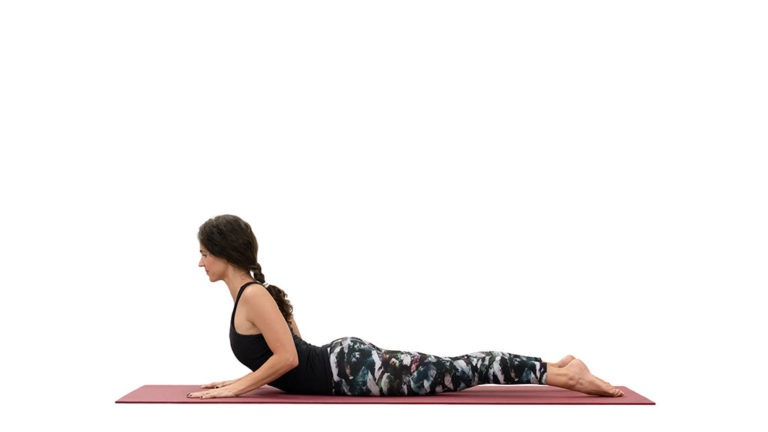
ADJUSTMENTS | BENEFITS | SEQUENCING | SANSKRIT | STEPS
Bhujangasana (boo-jang-GAHS-anna) is a great way to strengthen the upper back and is often practiced as part of a transition back to downward-facing dog in vinyasa yoga. Practicing cobra pose regularly can improve your lung capacity, reduce stress, and stimulate many of the internal organs in your body.
Philosophy + Origin
Although often perceived as evil or dangerous, snakes also have a rich history of power and worship. In some yoga traditions, the energy of kundalini is represented by a serpent resting coiled at the base of the spine. By awakening this snake, we enliven our body’s energy and create a pathway towards enlightenment. This connection with enlightenment is also seen in many portrayals of the Buddha where he is shown with a cobra over his head.
ADJUSTMENTS/MODIFICATIONS:
- Option to swap cobra pose for sphinx pose by placing your forearms on the floor.
- Lengthen the back of the neck to avoid straining the neck and upper back.
- If you experience discomfort in the lower back, bend the elbows more.


